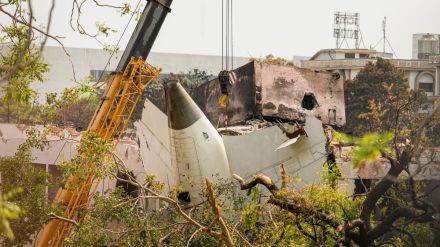Ahmedabad plane crash: After the tragic Air India crash, which killed all but one passenger, the Aircraft Accident Investigation Bureau (AAIB) launched a probe. The investigating body submitted its preliminary report on the crash to the Ministry of Civil Aviation and it is expected to be released by Friday. The main focus of the investigation will be on the advanced systems of the Boeing 787 aircraft, according to a report by TOI. Investigators may look at whether a complex, multi-system failure contributed to the incident.
The investigation will be a system-level case study, meaning that the investigators will analyse Boeing 787’s high-tech system. This will be done to understand if a hidden flaw or a software bug across systems led to the crash, rather than a single malfunction.
“Apart from the roles and responsibilities of Air India, the Directorate General of Civil Aviation, and others, the investigation will crucially be a Boeing 787 systems-level case study,” a senior commander, on the condition of anonymity, told TOI.
The commander added, “It’s the first such global investigation of the ‘more electric’ B787 aircraft. The preliminary findings, if substantial and critical, could reshape B787 global operations.”
Air India plane’s fuel switches in focus
According to a report by Reuters, the investigators have narrowed their focus to the movement of the plane’s fuel control switches, which help power the plane’s engines. This comes after an analysis of the 787’s flight and voice data recorders, along with a simulation by Boeing of the aircraft’s final moments.
US aviation safety expert John Cox said a pilot would not be able to accidentally move the fuel switches that feed the engines. “You can’t bump them and they move,” Reuters quoted him as saying. He added that if a switch has been turned off, then it will immediately cut off engine power.
AI171 crash probe ‘inconclusive’
The preliminary report, which the investigating body submitted to the ministry, includes initial findings from the black box data and does not provide any final conclusions. The investigation is underway and it could take months to reach a conclusion, as per a report by CNBC.
‘Boeing 787 software glitch led to AI plane crash’
Earlier, Mary Schiavo, aviation attorney with Motley Rice told The Sunday Guardian that the world’s worst aviation crash may be due to a known software-triggered engine malfunction. She added that the aircraft may have suffered from a dual-engine thrust rollback triggered by a software failure. This malfunction, she said, had previously been documented and investigated in similar Boeing 787 incidents.
She specifically underscored the Thrust Control Malfunction Accommodation (TCMA), a safety system on the Boeing 787 designed to control engine performance through the Full Authority Digital Engine Control (FADEC). The system can automatically reduce the thrust of the engine if it senses that the aircraft is on the ground without the intervention of the pilot. This, she said, leads to a catastrophic power loss mid-air and that was possibly what happened in the AI-171 case.
NYT investigation: ‘Both engines failed together’
According to an investigative report by The New York Times last week, the crash could be because of the dual engine failure at the same time in mid-air. The outlet also reported that if one engine had failed, the aircraft could have shown a kind of asymmetric thrust, which it did not. NYT arrived at this conclusion after speaking to aviation experts.
While the dual engine failure is extremely rare, it cannot be ruled out. The report mentioned that the dual engine failure could have been caused by the contamination of the fuel source in both engines or by an incorrect input of flight parameters before takeoff.
The landing gears also did not retract, although it was initiated – this could possibly be due to the lack of sufficient power. The right wing slats were in an extended position, indicating they were deployed to increase surface area and generate more lift.
The investigating agency also recreated the flight using the same conditions and found that these settings alone didn’t lead to a crash. The flight simulation uses computer models and mathematical data to copy the physics of flying, like how an aircraft turns, climbs, lands, or, in Air India’s case, crashes.
